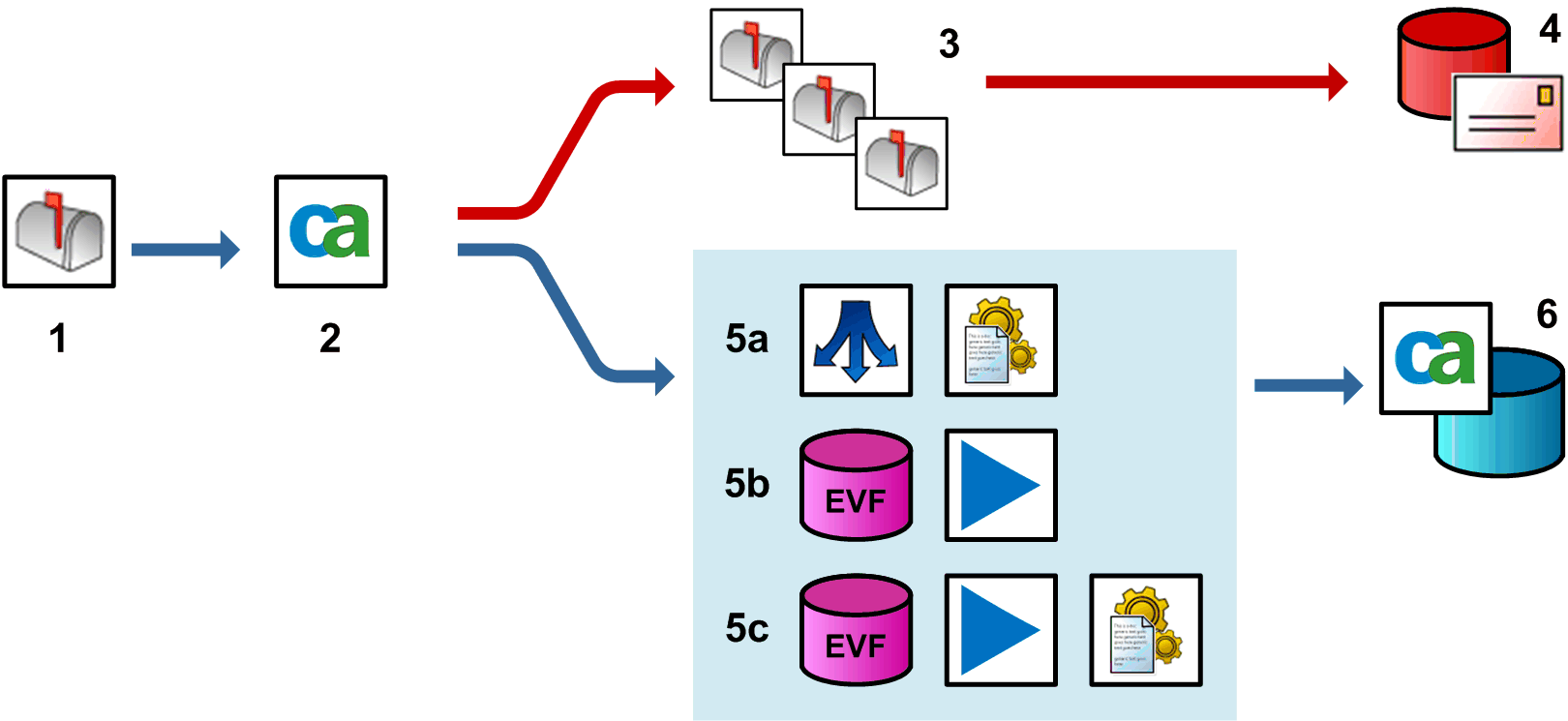

Archive Integration Guide › Third-Party Integration › Integration Models › Model 3: Push to Archive (via mailbox)
Model 3: Push to Archive (via mailbox)
The following illustration describes this model:

Integration model 3: Push to archive (via mailbox)
In this model, CA’s Universal Adapter (step 2 in the diagram below) imports e‑mails from journal mailboxes (1), adds a unique ID to each email and outputs them to mailboxes (3), from where they are picked up by the archive solution (4).
After confirmation that the emails have been successfully archived, the Universal Adapter also outputs the same emails (5) either to a policy engine or to EVF files. As with models 1 and 2, there are three methods for ingesting the emails into the CMS:
- 5a: UA outputs to policy engines: The UA commits the e‑mails directly to a policy engine (5a). The resulting e‑mail events are then replicated up to the CMS (6). Unlike ingestion methods 5b and 5c, this method has no additional storage overhead.
- 5b: UA outputs to EVFs to be ingested by Import Policy job: The UA converts the emails to EVF file. These EVFs are saved in a cache (5b), from where they are retrieved by Event Import and passed to a local policy engine for processing. The resulting e‑mail events are then replicated up to the CMS (6). Like method 5a, this method allows smart tags to be assigned to the ingested e‑mails, but also permits ingestion to be scheduled for periods of low network activity.
- 5c: UA outputs to EVFs for direct import into CMS: The UA converts the e‑mails to EVF files. These EVFs are saved in a cache (5c), from where they are subsequently imported onto the CMS (6).
As in models 1 and 2, only the event metadata is saved on the CMS. The actual message data is not stored on the CMS; instead, a database record for each email references the associated entry in the archive.
More information:
Universal Adapter
Copyright © 2015 CA Technologies.
All rights reserved.
 
|
|


